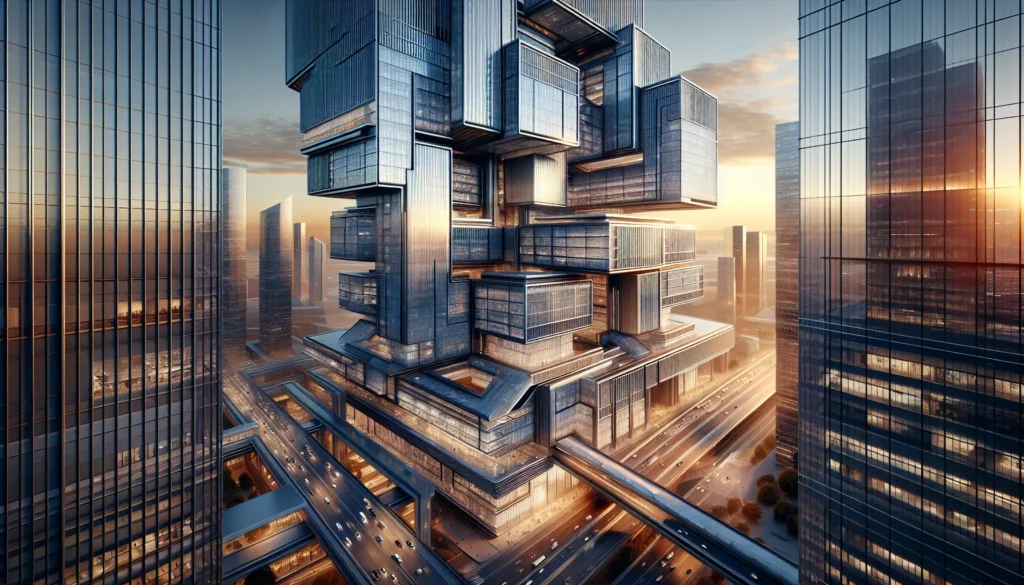Table of Contents
ToggleIn a world where selfies dominate social media, architecture images stand out like a well-structured skyscraper in a forest of trees. They capture the essence of creativity and innovation, transporting viewers to majestic cathedrals, sleek modern homes, and whimsical bridges. These images not only showcase stunning designs but also tell stories of the cultures and histories behind them.
Imagine scrolling through your feed and stumbling upon a breathtaking shot of a building that makes you question your life choices—like why you didn’t become an architect. From minimalist masterpieces to ornate palaces, architecture images inspire awe and spark curiosity. They invite everyone to appreciate the artistry that shapes our environments, reminding us that beauty can be found in the most unexpected places. So buckle up as we dive into the captivating world of architecture images that are sure to make you stop, stare, and maybe even dream a little.
Overview of Architecture Images
Architecture images play a crucial role in understanding built environments. They not only depict physical structures but also convey emotions and ideas tied to those designs. From ancient monuments to contemporary skyscrapers, each image tells a story that reflects cultural values and technological advances.
Such images serve as a canvas for creativity, showcasing architectural diversity. Iconic structures, like the Eiffel Tower or the Sydney Opera House, stand as symbols of innovation and artistic expression. These visuals attract attention on social media, sparking conversations about design trends and sustainability.
Architectural photography captures intricate details, emphasizing textures and materials. This style of imagery highlights aspects of design that might go unnoticed in person, such as light interaction and spatial relationships. Various photography techniques enhance architectural features, enabling viewers to appreciate craftsmanship and artistry.
High-quality architecture images aid in marketing real estate properties. Listings with striking visuals attract potential buyers, making properties more appealing. In addition, they offer a window into the architectural heritage of cities, encouraging exploration and tourism.
In educational contexts, architecture images serve as learning tools. Students studying design and history benefit from visual references, enabling a deeper understanding of architectural movements. Illustrated books and online galleries provide abundant resources for aspiring architects and enthusiasts alike.
Viewing architecture images fosters a greater appreciation for the built environment. As they navigate architectural styles and historical significance, individuals gain insight into how design shapes everyday life. Engaging with these images can inspire future innovations and architectural endeavors.
Importance of Architecture Images
Architecture images serve as a powerful means of visual storytelling. They encapsulate the essence of design, culture, and history, revealing much about societal values and intentions.
Visual Communication in Architecture
Visual communication significantly enhances the understanding of architectural concepts. Clear architectural images provide insights into structure, scale, and spatial relationships. They express not only the aesthetics of buildings but also functional aspects, guiding viewers in interpreting complex designs. Furthermore, high-quality photography captures intricate details like texture and light, enriching the viewer’s experience. Such visuals facilitate discussions about architectural styles and trends, making them pivotal in the education of aspiring architects and designers.
Inspiring Design Concepts
Inspiring design concepts emerge through the lens of architecture images. Iconic structures and innovative designs motivate architects and designers to push boundaries. Examples of modern buildings showcase unique solutions to urban challenges, inspiring fresh ideas in sustainability and functionality. Architecture images spark dialogue about artistic expression and cultural significance, urging professionals to explore diverse perspectives in their work. Accessing a variety of styles encourages creativity and experimentation, ultimately leading to groundbreaking architectural endeavors.
Types of Architecture Images
Architecture images come in various forms, each serving distinct purposes in capturing the essence of design. Three primary types include photography, renderings and illustrations, and historical images.
Photography
Photography plays a vital role in showcasing architectural beauty. Professional photographs emphasize intricate details and unique textures of structures. They capture the interplay of light and shadow, enhancing the perception of scale and dimensionality. High-quality images often make properties more appealing to potential buyers, making them essential in real estate marketing. Stunning architectural photography invites viewers to appreciate craftsmanship. It provides insight into the artistic vision behind each design.
Renderings and Illustrations
Renderings and illustrations serve as crucial tools in architectural visualization. These digital and hand-drawn depictions help convey design concepts before construction begins. Architects use these visuals to communicate ideas to clients and stakeholders. Renderings often feature realistic materials and settings, creating a compelling sense of presence. Illustrations can capture potential changes in context, such as landscaping or urban development. Together, they offer valuable insights into the envisioned outcome of architectural projects.
Historical Images
Historical images document the evolution of architecture over time. These visuals hold cultural and contextual significance, providing insight into past architectural movements. Archival photographs illustrate how societies utilized space and materials throughout history. They showcase iconic structures that reflect technological advancements and shifting design philosophies. By studying these images, individuals gain a better understanding of cultural values embedded in architectural styles. Educational institutions often use historical images as valuable learning resources, enhancing the study of design and heritage.
Platforms for Sharing Architecture Images
Sharing architecture images has become crucial for artists, architects, and enthusiasts. Various platforms cater to different aspects of visual storytelling in architecture.
Social Media
Platforms like Instagram and Pinterest excel in showcasing architecture images. Users find inspiration through visually captivating posts that highlight innovative designs. Such platforms allow architects to engage with a broader audience, forging connections with design lovers and industry professionals. Hashtags enhance discoverability, enabling users to explore niche topics like sustainable architecture or historic restoration. Further, architecture-oriented groups on social media foster discussions about trends, techniques, and cultural significance.
Online Portfolios
Online portfolios serve as visual resumes for architects and designers. These platforms allow users to display completed projects, emphasizing unique styles and techniques. They facilitate the curation of high-quality images, helping professionals create a cohesive narrative. Additionally, platforms like Behance and Dribbble enable architects to network and receive feedback from peers, which aids continuous improvement. Building a strong online presence helps attract potential clients and collaborators while promoting their artistic vision.
Architecture images hold immense power in shaping perceptions of the built environment. They not only showcase stunning designs but also connect viewers to the cultural and historical narratives embedded within each structure. By capturing intricate details and emphasizing craftsmanship, these visuals inspire admiration and curiosity.
As social media continues to serve as a platform for sharing architectural wonders, the importance of high-quality images becomes even more pronounced. They foster dialogue about design trends and sustainability while motivating architects and designers to innovate. Ultimately, engaging with architecture images cultivates a deeper appreciation for the artistry and significance of our surroundings, encouraging exploration and a greater understanding of architectural heritage.







